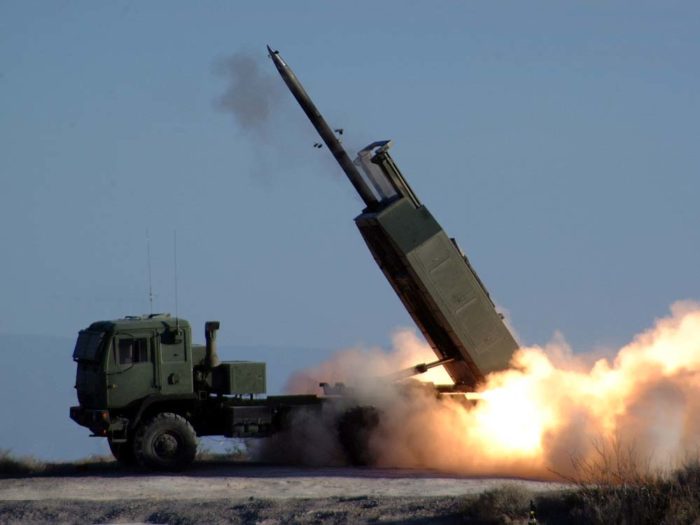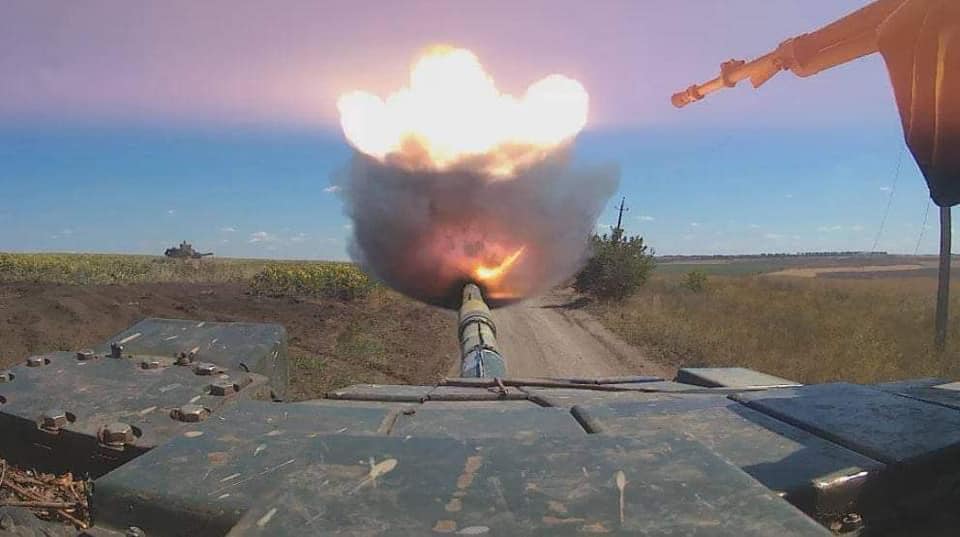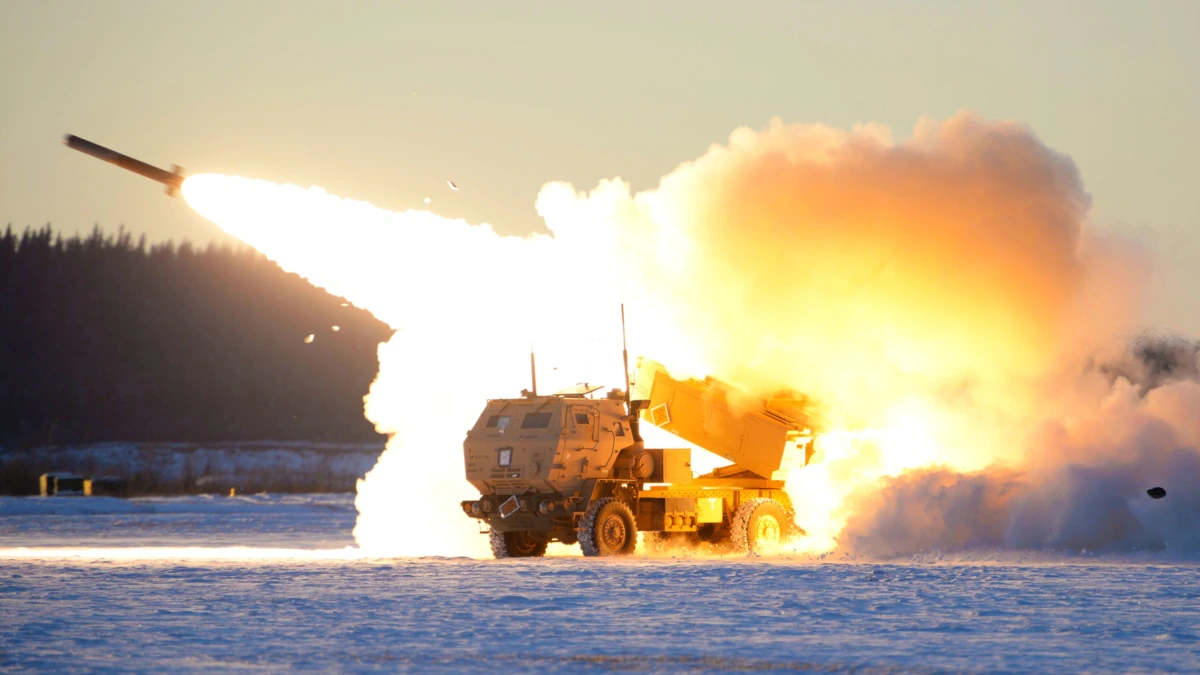It became known on 31 May that the US decided to supply multiple-rocket launchers M142 HIMARS. On the next day, US State Secretary Antony Blinken said that Ukraine gave assurances it won't hit targets in Russian territory with long-range US weapons systems. On 6 June, UK Defense Secretary Ben Wallace announced that Britain is going to send the M270 launchers, another US-developed weapon used for multiple rocket strikes at long distances.
Experts of the Kyiv-Based Center for Defense Strategies (CDS) believe that the Western multiple-rocket launch systems (MLRS) can tip the scales of victory in Ukraine's favor in the ongoing Russian full-scale invasion of Ukraine:
"If we get the right amount of MLRS, use it in combination with modern reconnaissance and targeting, and move to tactics that suit these high-tech weapons, it will allow us to level the numerical superiority of the enemy, including in firepower. Appropriate preconditions will be created for a breaking point in this war."
The following assessment is mostly based on the article by Viktor Kevliuk, Andrii Ruzhenko, and Oleksandr Khara of the Center for Defense Strategies initially published in Ukrainska Pravda in Ukrainian.
MLRS is basic in contactless warfare
One of the main trends of the local conflicts in recent decades is contactless combat with extensive use of high-precision weapons, according to the CDS experts. The conflicts involve the use of reconnaissance and strike systems operating in a single information space, and the multiple-rocket launch systems are basic for the fire impact on the enemy in these systems.
The Russian troops deployed in Ukraine have:
- a significant number of obsolete weapons and equipment;
- limited capabilities of intelligence systems;
- the low automation level in the control of using rocket and barrel artillery units.
This shows that in reconnaissance and fire operations, Russia's capabilities to use rocket and artillery weapons employing modern tactics are significantly limited, the experts believe.
This results in:
- a long reaction time when firing at unplanned targets;
- low efficiency of destruction of highly mobile targets;
- insufficient fire productivity;
- weak opportunities for fire damage to the targets in Ukraine's operational depth.
But the same shortcomings are also inherent in Ukraine's rocket forces and artillery, as they use the same Soviet legacy artillery systems. Meanwhile, Russia has roughly ten times more artillery pieces and ammunition than Ukraine. So far, this led to Russia's relative success in its ongoing campaign in eastern Ukraine.
According to the experts, in order to gain an advantage on the battlefield, Ukraine needs asymmetric solutions based on high-tech weapons and new tactics of their use. And the Western high-tech multiple rocket launchers and targeting systems can significantly improve Ukrainian capabilities.
Russian multiple rocket launchers
The MLRS segment of Russia's strike capabilities comprises various rocket systems:
- 9k51 Grad ("Hail"): adopted in 1963, approximately 894 operational units in service, up to 2,000 in storage, 122 mm rockets with firing ranges of 17 to 37.5 km.

Russian BM-21 Grad rocket launcher on a Ural-4320 chassis. Photo: Wikimedia Commons - 9k51m Tornado-G (upgraded 9k51 Grad): adopted in 2013, up to 180 units reportedly in service (although an analysis of the organizational and staffing structure shows only 162 vehicles available), 122 mm munitions having a range from 33 to 40 km.
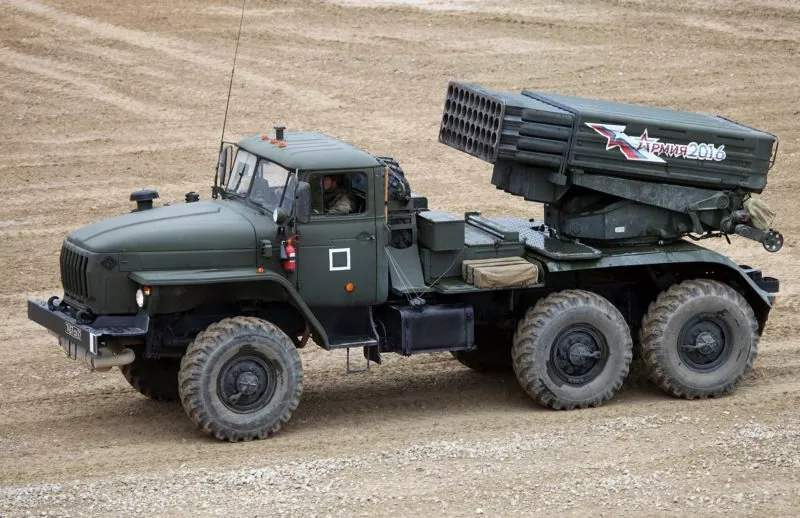
Russian 9K51M Tornado-G MLRS. Photo: Wikimedia Commons - 9k57 Uragan ("Hurricane"): adopted in 1975, up to 252 operational vehicles, up to 650 units in storage, 220 mm ammunition (including chemical warfare), and a 35 km firing range.
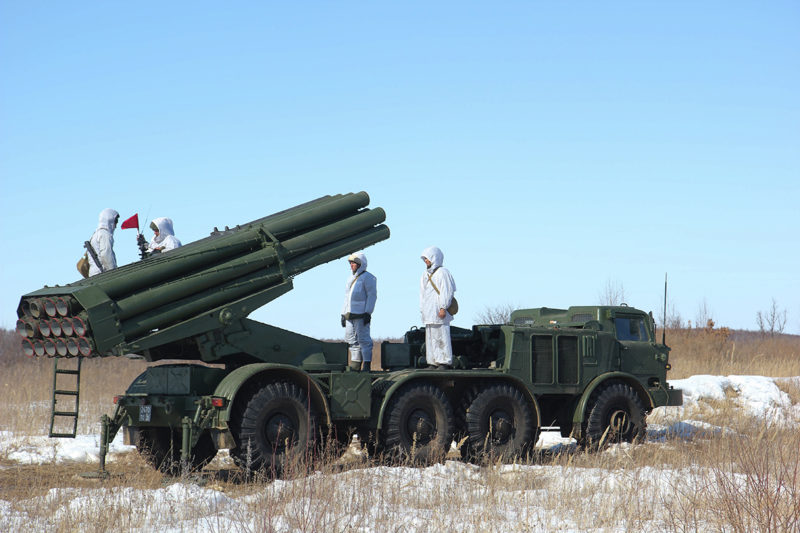
Russian MLRS 9K57 Uragan. Photo: mil.ru - 9k512 Uragan-1M: adopted in 2016, 6 confirmed operational vehicles, replaceable 220/300 mm guide tubes, 120 km range.
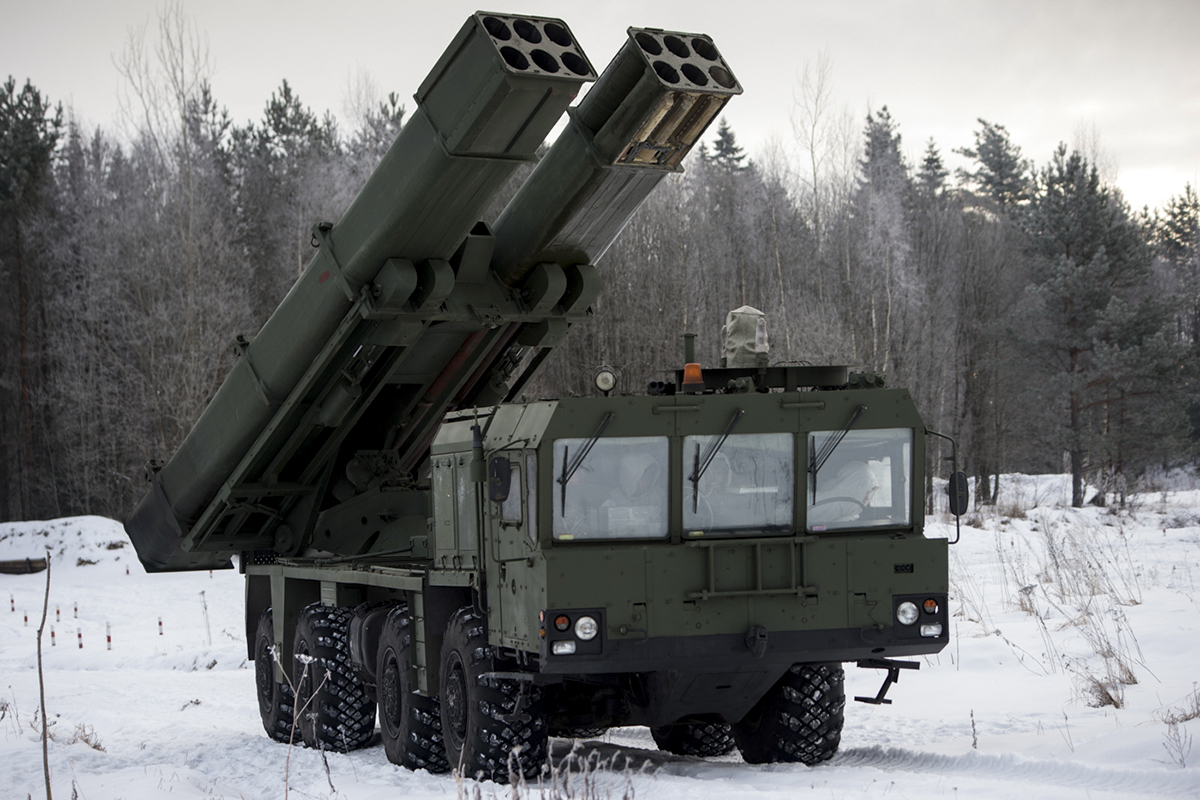
Russian MLRS 9K512 Uragan-1M. Photo: mil.ru - 9k58 Smerch ("Tornado"): adopted in 1987, 18 operational vehicles, up to 80 in storage, 300mm ammunition (including thermobaric) with ranges up to 120 km. The Smerch remains the most powerful Russian MLRS.

Russian MLRS 9k58 Smerch. Photo: Wikimedia Commons - 9k515 Tornado-S: adopted in 2016, up to 20 operational vehicles, 300 mm rockets with a range of up to 120 km (possibly up to 200 km with the newest munitions).
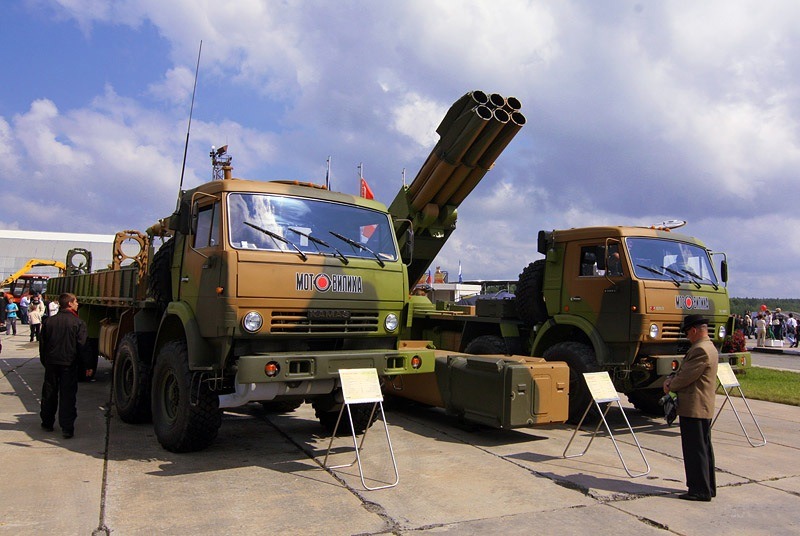
Russian MLRS Tornado: 9A52-4 launcher vehicle (right) and 9T234-4 reloading vehicle (left). Photo: Wikimedia Commons
Moscow's priorities in the development of the MLRS are equipping the Russian military units with high-precision long-range rockets and reducing the time required for the fire-readiness and reloading. Russia planned to replace all its units of MLRS Uragan and Smerch with Tornado-S by 2027.
These systems are capable of inflicting fire damage not only on troops on the front line but also on rear targets such as command posts, air-defense, and artillery positions, reserves, marching columns, helicopter landing sites, warehouses, and so on.
Ukraine's MLR systems
Currently, the Ukraine army's fleet of MLRS consists of the Soviet-manufactured systems Grad (185 units as of 2016), Uragan
(70 as of 2016), Smerch (80 as of 2014), and the newly-developed ones - Verba, Berest, and Bastion-01.
- Verba MLRS: adopted in 2019 as an upgraded replacement for the Grad, 38 units in service, 122 mm rockets with a firing range of 0.5–45 km;
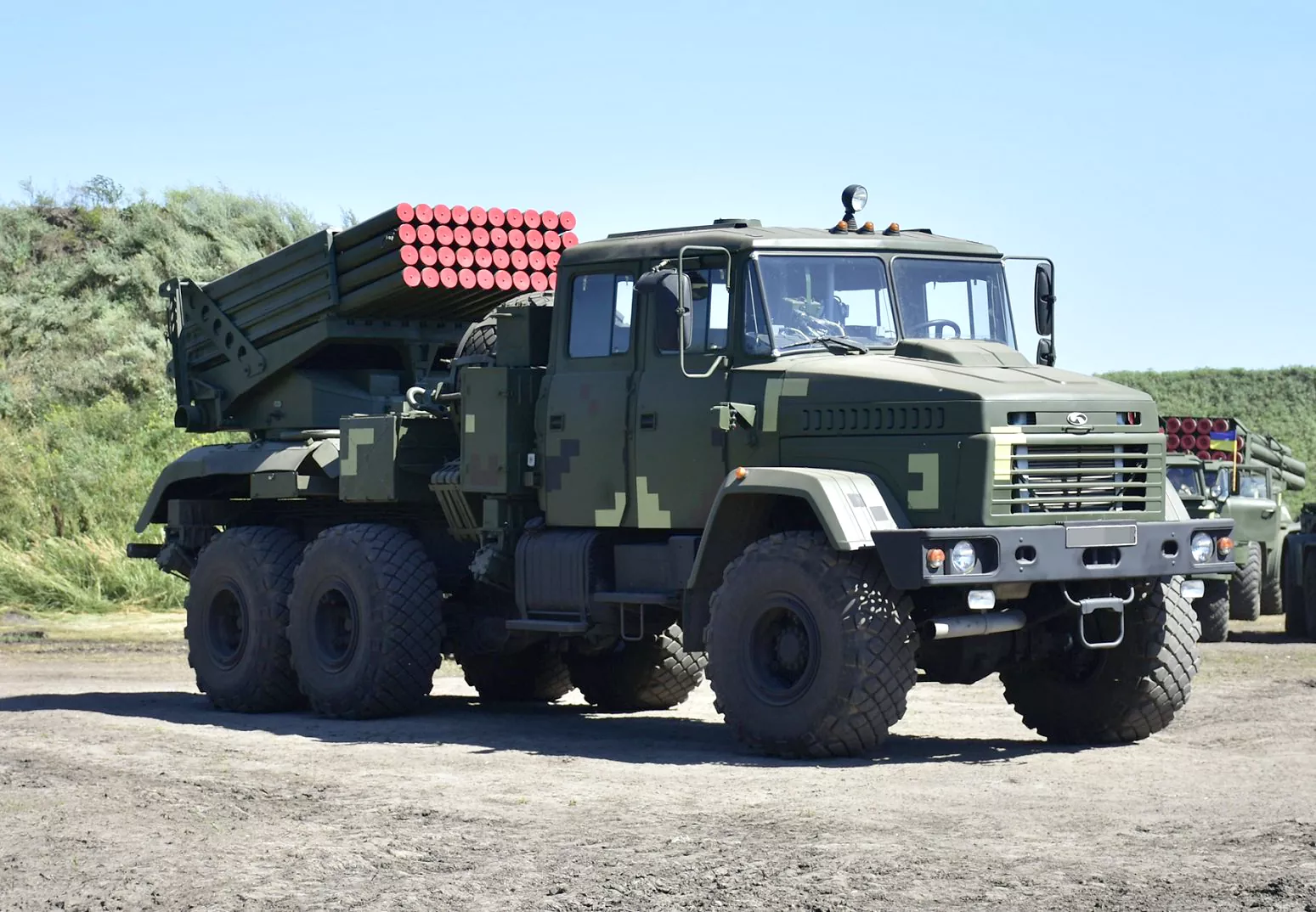
Ukraine's Verba MLRS. Photo: armyinform.com.ua - Berest: a deep modernization of BM-21 Grad, not adopted, 10 vehicles were manufactured.
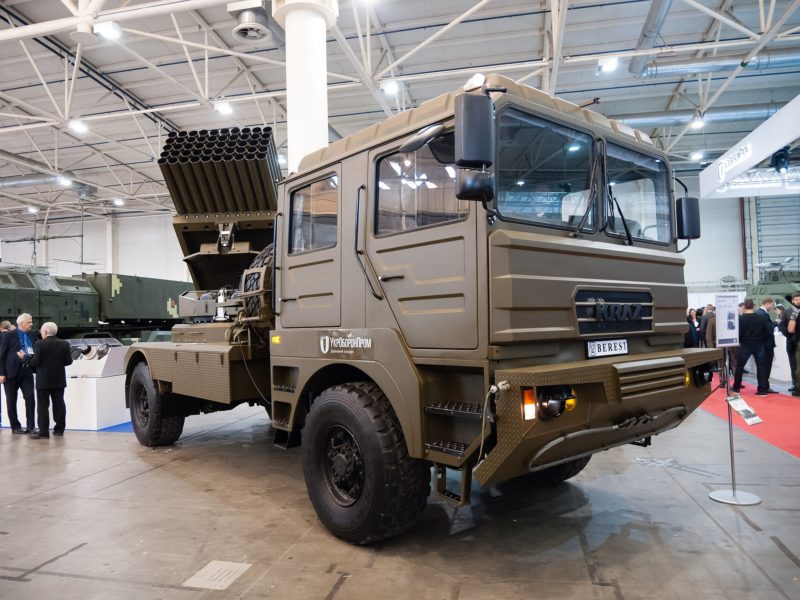
BM-21UM Berest Ukrainian MRLS, 'Zbroya ta Bezpeka' military fair, Kyiv, Ukraine, 2018. Photo: Wikimedia Commons - Bastion-01: an unknown number in service, uses Grad 122mm rockets with a firing range of 40 km.
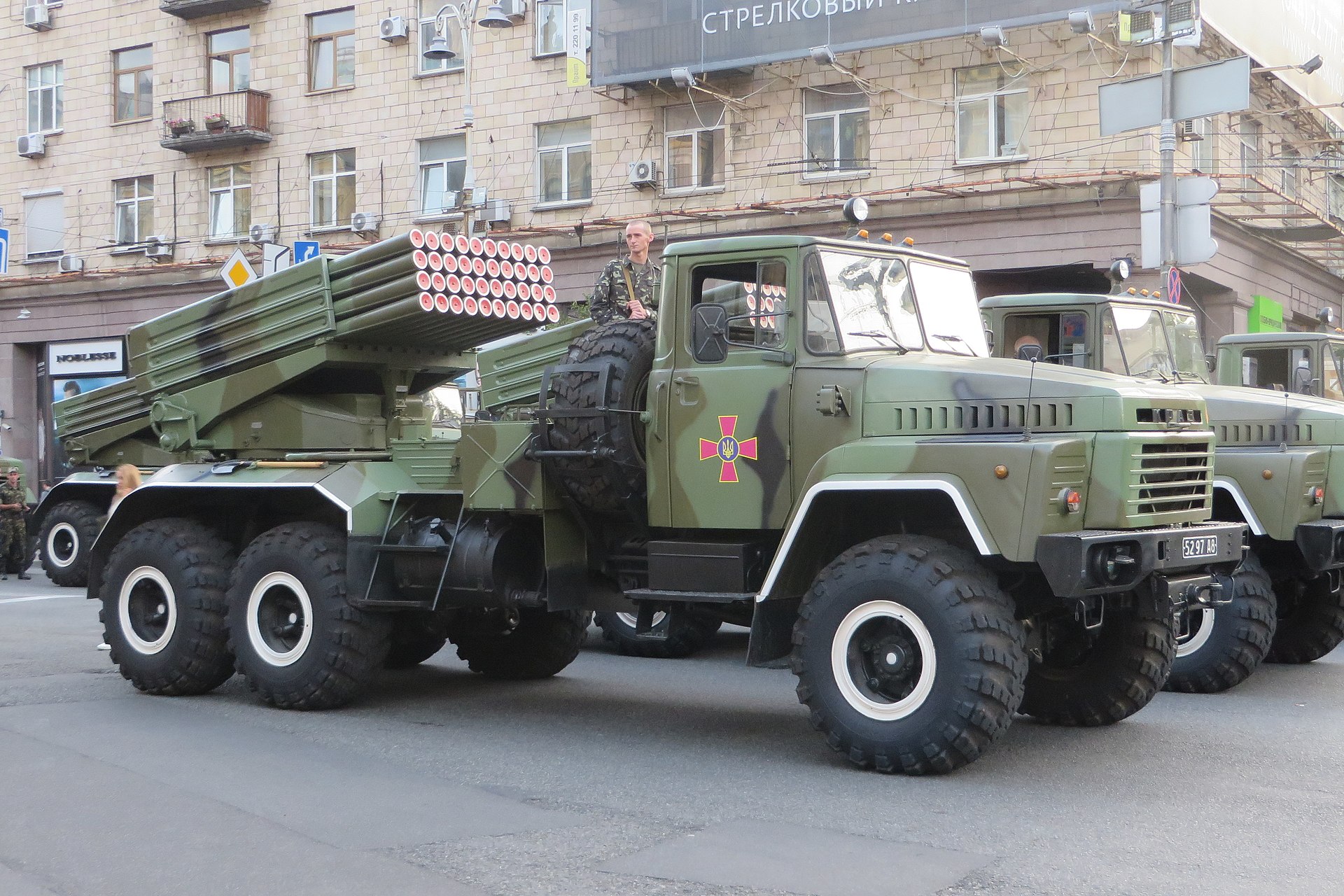
Ukrainian BM-21 Bastion-1 based on KrAZ-260 chassis. photo: Wikimedia Commons
International supplies can be a game-changer for Ukraine
The American M142 HIMARS and M270 MLRS adopted by many armies around the world are of particular interest to Ukraine, according to the experts of the Center for Defense Strategies. Also of some interest to the Ukrainian Armed Forces are the German LARS-2, the Polish WR-40 Langusta, and the Turkish T-122 Roketsan, the experts say.
Of those available on the world market, the following MLR systems should be noted:
- M142 HIMARS: 227 mm caliber, ranges (depending on the type of ammunition) between 45 and 300 km, manufacturer: USA;
- M270 MLRS: 227 mm caliber, ranges between 45 and 300 km, manufacturer: USA;
- LAR-160: 160 mm caliber, ranges between 30 and 45 km, manufacturer: Israel;
- TR-300 Kasirga: 302 mm caliber, ranges between 40 and 180 km, manufacturer: Türkiye;
- Astros II: calibers of 127, 180, 300 mm, firing ranges between 30 and 90 km, manufacturer: Brazil;
- LARS-2: 110 mm caliber, 30 km firing range, manufacturer: Germany;
- WR-40 Langusta: 122 mm caliber, 42 km firing range, manufacturer: Poland, the system uses the entire kit of Grad;
- T-122 Roketsan: 122 mm caliber, firing ranges between 20 and 42 km, manufacturer: Türkiye.
Türkiye manufactures the Kasirga TR-300 and Roketsan T-122 under Chinese license, which makes it difficult or even impossible for Ukraine to obtain the systems as Beijing took the neutral official position regarding Russia's war in Ukraine.
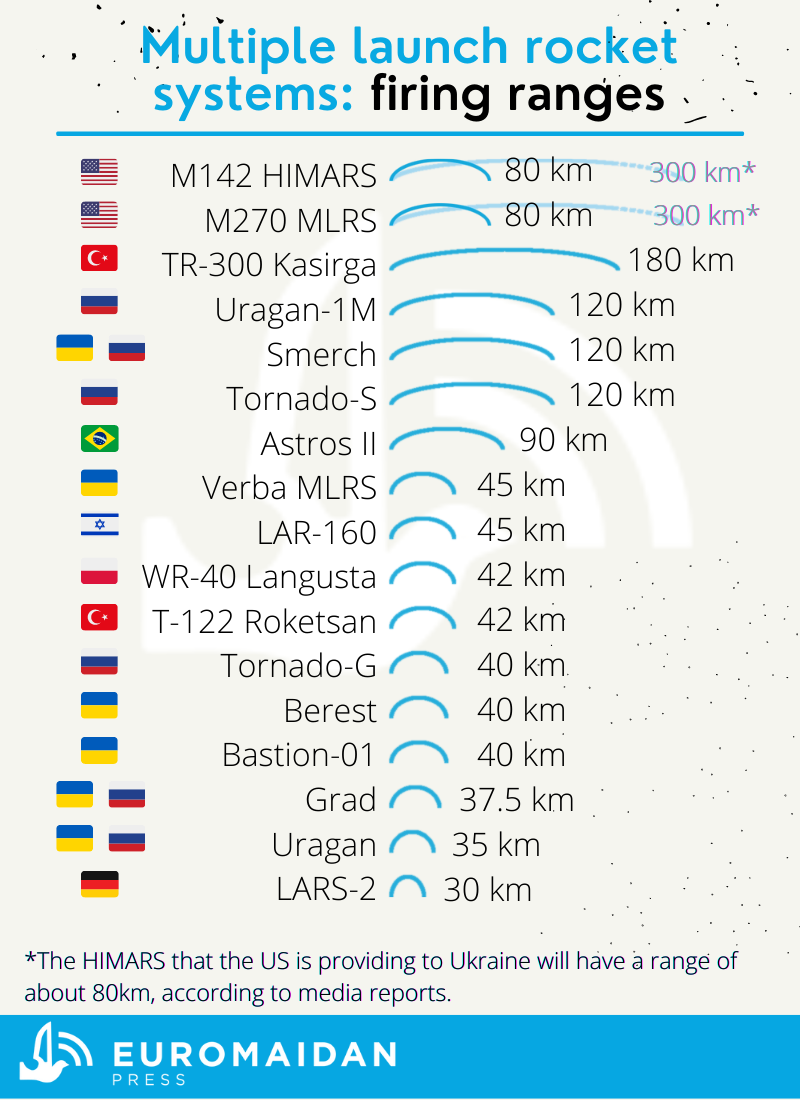
So which systems are optimal for Ukraine?
According to the experts of the Center for Defense Strategies, key selection criteria are as follows:
- a firing range of at least 40 km;
- autonomy of actions;
- integration into automated control systems and the ability to exchange combat information;
- availability of a wide range of ammunition.
Also, the availability of four important aspects should be taken into consideration:
- training in servicing and usage;
- logistics (repair, maintenance, supply of ammunition);
- prospects for modernization (open technologies for Ukraine);
- the speed of saturation of troops in the numbers required to stop and repel the enemy.
Bottlenecks
The Western MLR systems were developed in response to the numerical and fire superiority of the USSR in the European theater, so Ukraine would have every chance to test the conceptual approaches in practice.
However, Ukraine is about to deal with two major bottleneck factors:
- With Ukraine's current state of the economy, obtaining the MLRS systems is possible only at the expense of security assistance. Meanwhile, our partners can't provide weapons systems and ammunition in unlimited quantities, as they must maintain the required level of stocks for their own needs, taking into account the pace of production and replenishment.
- Another bottleneck is time and logistics, as the equipment and ammunition should be transported overseas to neighboring partner countries, and then from Ukraine's western border to the war zone. Given the Russian capabilities to hit elements of critical especially transport infrastructure, this is a challenge.
According to media reports, Washington is currently going to supply the HIMARS systems with a range of about 80km, which may cover most of Ukraine's urgent needs if supplied in sufficient numbers.
Read more:
- Why Ukraine needs rocket artillery to win the war
- Russian troops suffer epic fail while attempting to cross river at Bilohorivka
- West must avert long-term war in Ukraine – US Gen. Wesley Clark
- 12 reasons why the West should arm Ukraine, now!
- Breakthrough at Ramstein: NATO unites to help Ukraine defeat Russia
- Javelins are good, but it is artillery strikes that coined Ukraine’s military success
- Like Napoleon’s 1812: why Russian troops retreated from northern Ukraine
- What weapons for Ukraine would help it win the war against Russia
- Ukraine’s strategy in Russian invasion: similar to Finland’s Winter War

